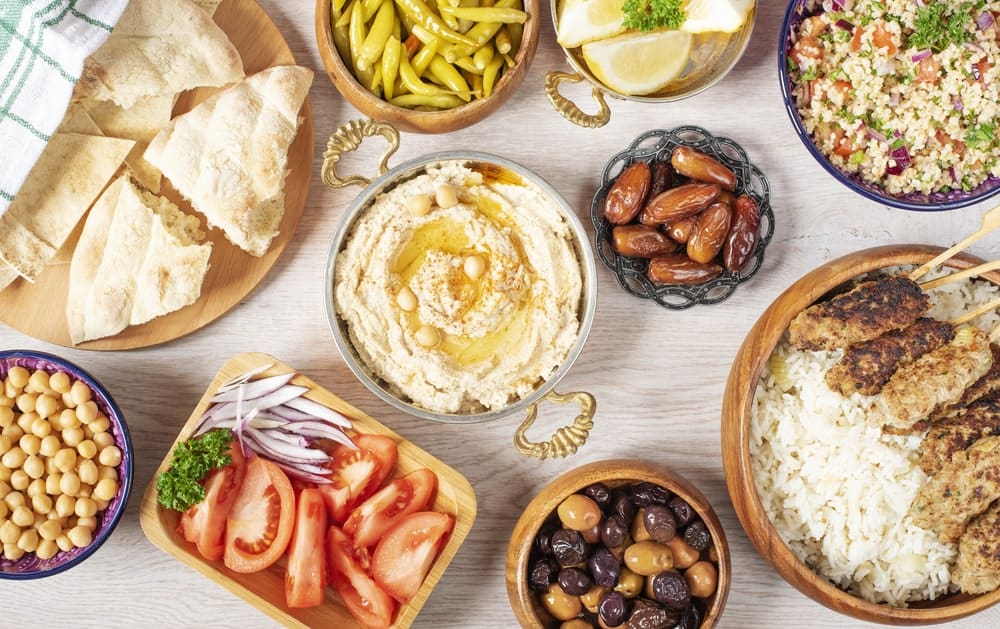Egyptian food is absolutely delicious. Though everyone knows about kebab and falafel, there’s much more to it and if you are traveling to Egypt it would be a real pity to miss out.
As a popular tourist destination, Egypt receives millions of travelers every year. They go there to see the Egyptian Pyramids, sail the River Nile, take photos next to the famous Great Sphinx, tour ancient temples and museums, or sunbathe at its beautiful beaches and dive in the Red Sea.
While Egypt’s numerous tourist attractions are a good enough reason to travel to the country, Egyptian cuisine is another reason to visit. By taking a culinary journey to Egypt you’ll learn more about its history, people and experience their culture first hand.
In this post, I will highlight the best of the culinary delights you’ll find if you decide to travel to Egypt. In the end, I will share some tips to better prepare for your trip.
Without further delay here is my selection of Egyptian food you absolutely have to try!
Disclaimer: This post contains affiliate links. This means that should you click on certain links, and then subsequently purchase a product, I will receive a small commission.
Table of Contents
All The Egyptian Food You Should Try: 28 Delicious Egyptian Dishes
Kushari (or Koshari)
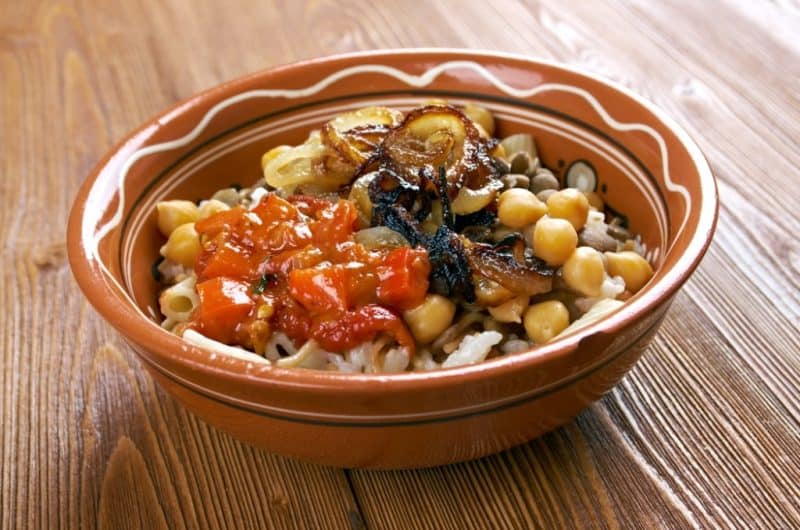
This is one of Egypt’s national dishes, and it has an interesting history to it. It started as an Indian dish of rice and lentils that British settlers in Egypt used to make in the 1800s. Italians added pasta to the meal before Egyptians finally added fried onions and tomato sauce to make what is today known as Kushari (also spelled as Koshari or Koshary).
Apart from rice, lentils, pasta, fried onions, and tomato sauce, other ingredients used to make this vegan meal are garbanzo beans, spaghetti, hummus, garlic, chili, and vinegar sauce. This interesting mix of ingredients gives kushari several mouth-watering flavors.
The dish is sold everywhere in Egypt, from street food stalls to five-star hotels in cities across the country. You must try koshari when in Egypt, but if you don’t want to add too much weight while on holiday don’t eat it too often. The dish is loaded with carbs which can lead to weight gain.
Molokhia (or Mulukhiyah)
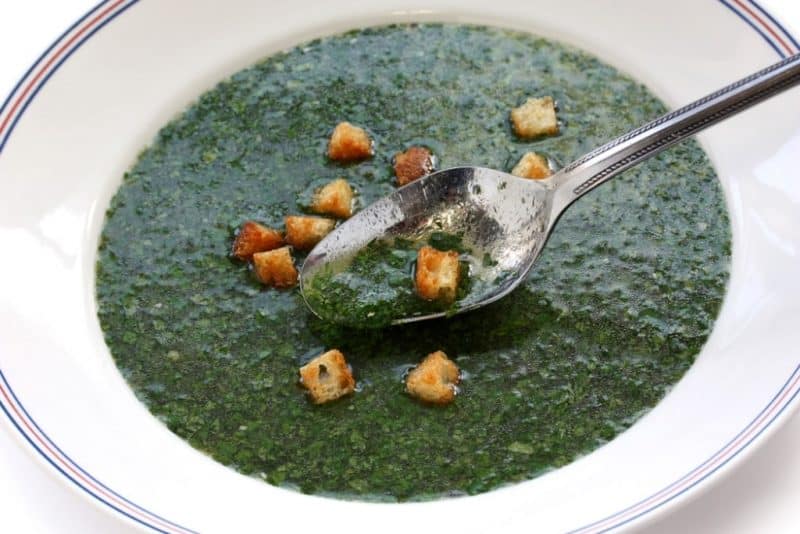
This is another vegan meal that is named after the plant used to make it. It is prepared using molokhia plant leaves (mallow leaves) which are cooked with lemon juice, garlic, and coriander to make a thick dark green soup.
When served, molokhia may not look appetizing because it has a slimy, mucus-like appearance – Fatimid Sultan Hakim was so grossed out by it that it banned the dish in the 11th century! But I guarantee you it tastes better than it looks, and it has many health benefits. You can have mulukhiyah with bread, rice, or chunks of beef, lamb, chicken, or rabbit meat. It’s an absolute must when it comes to Egyptian cuisine.
Ful Medames
Ful medames is one the best known traditional Egyptian food, believed to have been cooked way back in Ancient Egypt when pharaohs ruled the land. Together with koshari, this meal is one of the most popular dishes.
Its main ingredient is fava beans which are cooked with vegetable oil, lemon juice, onions, and salt. The fava beans are usually soaked for long hours so that their bean casing can be removed before they are cooked. The delicious beans stew is a popular breakfast meal in Egypt but you can have it at any time of the day. You can enjoy it together with eggs, cheese, pita bread, or pickled vegetables.
Feteer Meshaltet
Commonly referred to as Feteer, or Fiteer, this dish reminds me of Greek Tiropita. It consists of layers of very thin dough folded over a bunch of times and typically stuffed with cheese or meat. You can also find it served plain with icing sugar and abundant ghee (Samneh).
Egyptian Shawarma
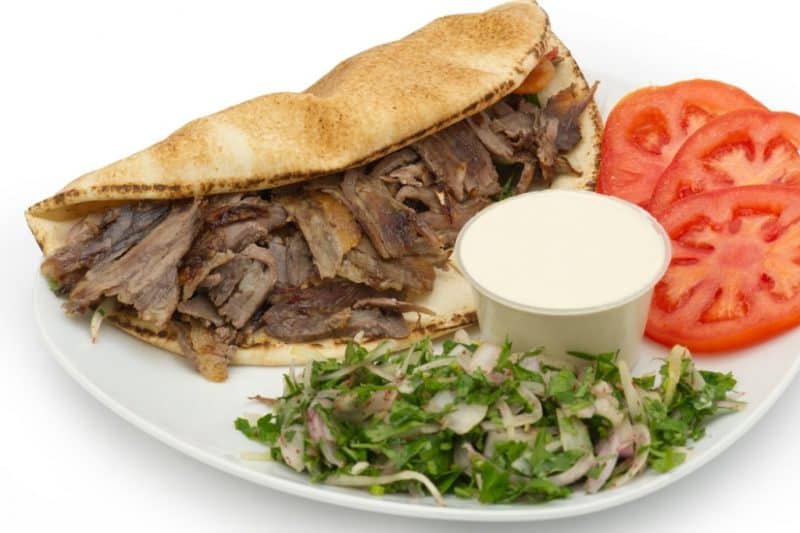
Shawarma is now a popular street food in many cities across the world, especially in the Middle East. In the streets of Cairo, the capital city of Egypt, shawarma joints with mouth-watering beef or chicken rotating on a grill are common. As you tour the city you can stop at one of these places and grab shawarma.
To make the Egyptian shawarma slices of marinated meat carved from a slowly revolving skewer are wrapped in a bun together will tomatoes, onions, spices, and fatty sauces. When you take the first bite of the shawarma your taste buds will be blown away. I wouldn’t be surprised if you order 3 or 4 of these because they are so tasty.
For the best shawarma in Cairo visit Abu Haidar located on 13 Ibrahim El Laqqany Street.
Hamam Mahshi (Pigeon)
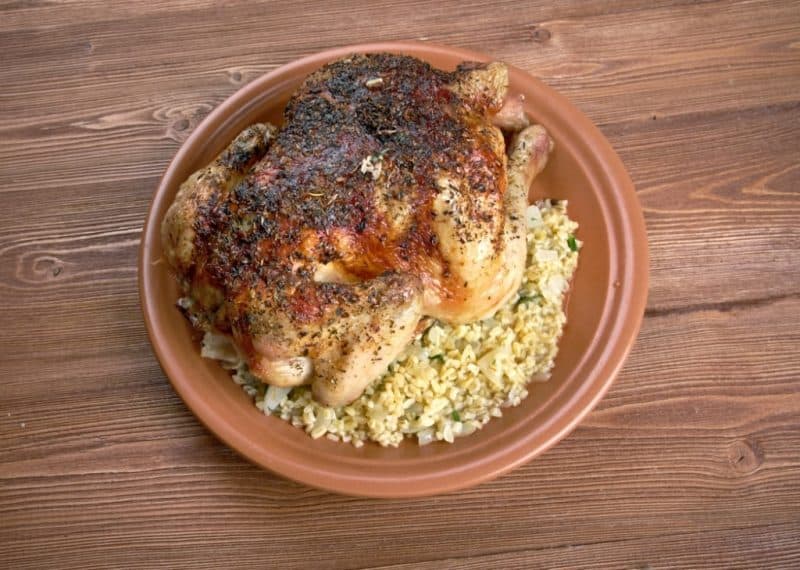
When you travel the world you’ll be surprised to learn some of the things people eat. In Egypt, pigeon meat is a delicacy that is mostly served during special occasions such as weddings, because it is considered a luxury food.
Pigeons are bred across the country until they are six weeks old, after that they are turned into one of the most famous traditional dishes in Egypt. To cook the dish a pigeon is stuffed with rice or freekeh (wheat), nuts, spices, and chopped onion then grilled over a wood fire until it turns golden brown. The bird has a crispy and unique flavor.
I know pigeons are seen as pests in the western world, but when in Egypt forget about that and try some hamam mahshi. You can order this meal in restaurants across Egypt. When you order pigeons, eat with your hands like the locals do, that way you can get the meat between the bird’s bones.
Hawawshi
If you love meat pies then you’ll enjoy eating hawawshi. This is a snack, a kind of sandwich you can take away from many restaurants in Egypt to enjoy later as you sightsee. It is also often taken for lunch or dinner.
To make it minced meat, parsley, onions, and pepper are mixed then put in the dough before they are baked in a wooden oven. Because of the pepper hawawshi is rather spicy; so have some water to cool your mouth if you’re not used to taking chili – alternatively, you can order one without the chili.
Kebdah (or Kebda)
Kebda Eskandarani, or Alexandrian Kebdah, is popular street food but Egyptians also cook it and eat it at home. It’s with beef liver fried in oil with cumin, garlic, cardamom, chili peppers, and spicy seasoning. It’s commonly eaten as a sandwich with a good dollop of tahini or served in a dish with rice or pita bread, lime wedges, and pickles.
Ta’meya (Tamiya)
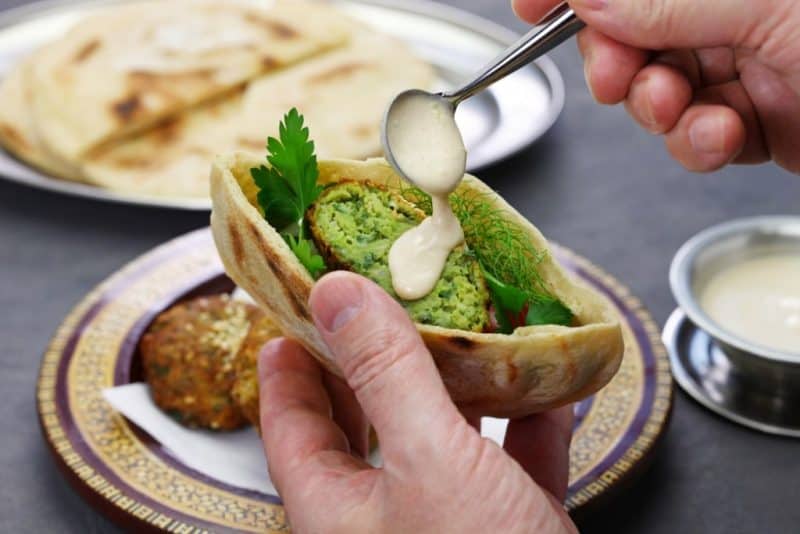
Known to the rest of the world as falafel, Ta’meya, or Tamiya as you may see it spelled, is a snack many Egyptians take for breakfast. It is also made from fava beans or chickpeas, which are first soaked to make them soft, then crushed to create a bean paste. The bean paste is mixed with coriander, chopped onions, parsley, garlic, cumin, salt, paprika, cayenne, chickpea flour, then everything is rolled into a ball that is deep-fried to until.
You can ask for this cheap and delicious vegan food in nearly all food stalls and restaurants around Cairo. While common as a breakfast snack, you can have it at any time of the day. It is usually served with salad, aish baladi (Egyptian flatbread), tahini, and a side of ful.
Fattah
Just like ful medammes, this dish is centuries old. It was served in ancient Egypt during big occasions such as weddings or at celebrations to mark the birth of a child. Even today, this traditional Egyptian dish can’t be missing from the menu of a major event. For example, on the first day of Eid-al-Adha (an Islamic feast), fattah is often the main dish.
It is very easy to prepare because all it takes is for prebaked aish baladi, cooked rice, and meat pieces to be mixed together with copious amounts of olive oil. The mixture is then coated with tomato or vinegar sauce then served. Most of the time ordinary beef is used to prepare fattah, but on special occasions, lamb is the meat of choice.
While simple this dish is very filling and delicious, it is also rather nutritious. So if you’re usually concerned about your weight, limit the number of times you have fattah while in Egypt.
Kebab and Kofta

Commonly found in all countries that were under Ottoman rule, these are among the most comforting and easily found dishes in Egypt – a popular street food as well. Kebab consists of chunks of lamb grilled on a skewer; whereas kofta is made with ground lamb, and also grilled. They are served with a salad of chopped tomatoes and cucumber and the typical flatbread.
Feseekh
Feseekh isn’t for everyone. This traditional dish is typically eaten during Sham El Nessim, a spring celebration. It consists of fermented mullet that’s prepared by letting the fish dry in the sun, soaking it in salty water for about a month. It’s served with salad and pita bread.
Sayadiyah (Sayadieh) Fish
Eaten throughout the Middle East (it’s very common in Lebanon), it’s a dish of fish (typically sea bass) cooked in a casserole with rice, onions, and tomato sauce and with added spices.
Masaa’a
When you order this dish whose main ingredient is eggplant don’t expect anything like Greek moussaka. This typical Egyptian food is more similar to curry than to a dish of layered eggplants. It’s prepared with eggplants, potatoes, bell peppers, chickpeas, and all sorts of spices and seasoning such as garlic and pepper. It’s vegan!
Mahsi (or Mahshi)
One of the best Egyptian food for vegetarians is this dish of stuffed vegetables – there are similar versions all across the former Ottoman Empire. It can be prepared any vegetable really – zucchini, peppers, cabbage leaves, eggplants, tomatoes, and even vine leaves. They are stuffed with rice, a variety of herbs (parsley is ever-present), and tomato sauce and then cooked in the oven. The non-vegetarian version also includes ground beef.
Besarah
Another great option for vegans and vegetarians, besarah is a kind of soup or creamy puree made with parsley, dill, leek, beans, green peppers, and spices and topped with fried onions. Yes, it is very green.
Macaroni Bechamel
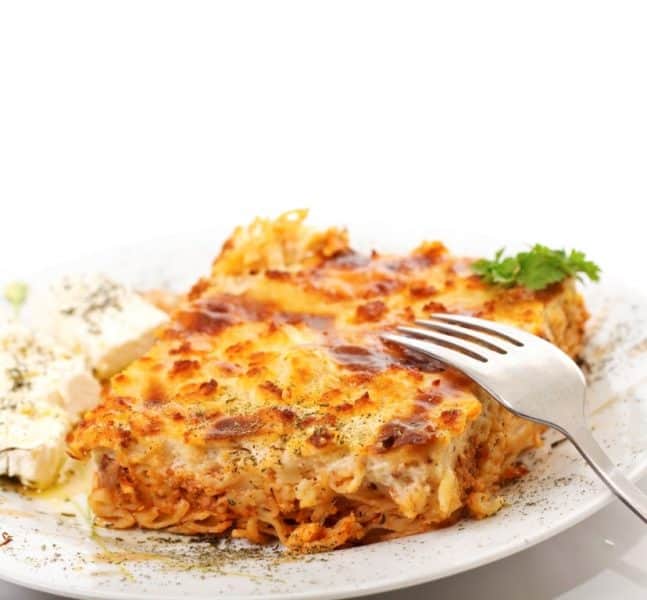
The Egyptian version of lasagne or pasta al forno is this dish which is very similar to Greek Pastitsio (then again, both countries were in the Ottoman Empire). It’s a truly filling, comforting dish prepared with short pasta like rigatoni or penne layered with a sauce of ground beef, onion, and tomatoes and a thick white sauce called bechamel (prepared with milk, butter, and flour) and sprinkled with a copious dose of cheese.
Hummus
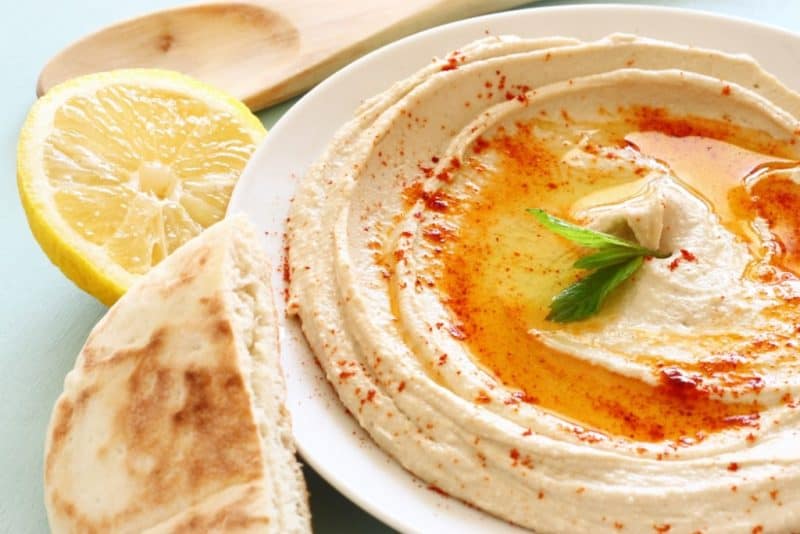
The debate over who invented hummus will never end, just as much as the debate over where you can eat the best hummus. In fact, hummus is found across most countries that were under Ottoman rule, including Egypt. This combination of crushed chickpeas, garlic, olive oil, lemon, and tahini is served warm, with pita bread. It’s a fabulous dip.
Baba Ganoush (or Baba Ghanoush)
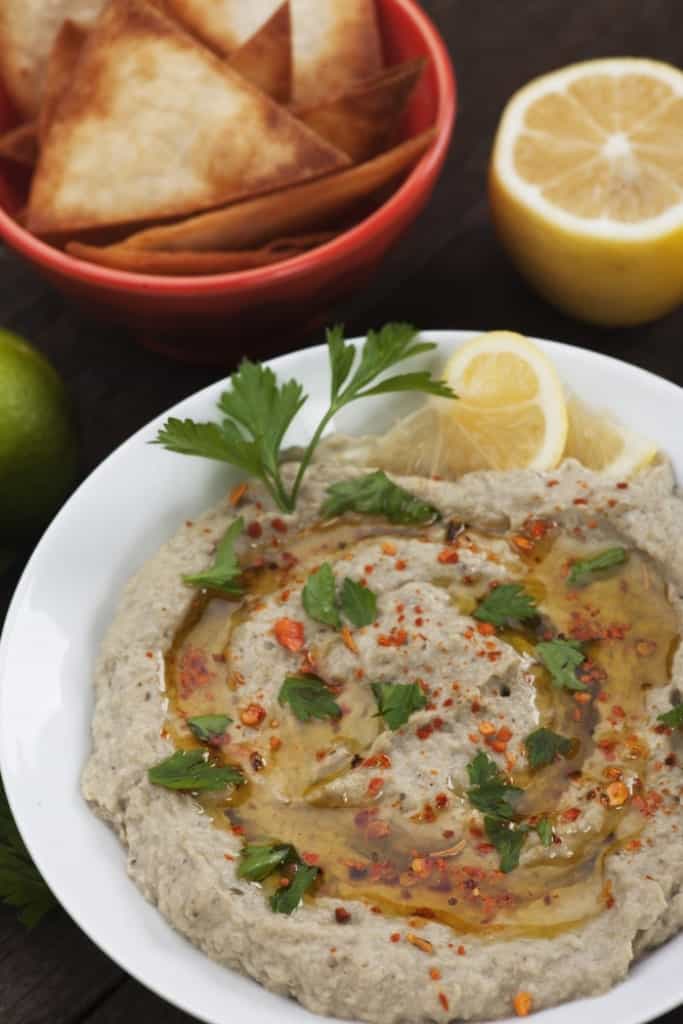
Yet another dish commonly found across the Middle East, it’s made with roasted eggplant, abundant garlic, olive oil, tahini (a sesame paste), and lemon. It’s served with pita bread.
Shakshouka
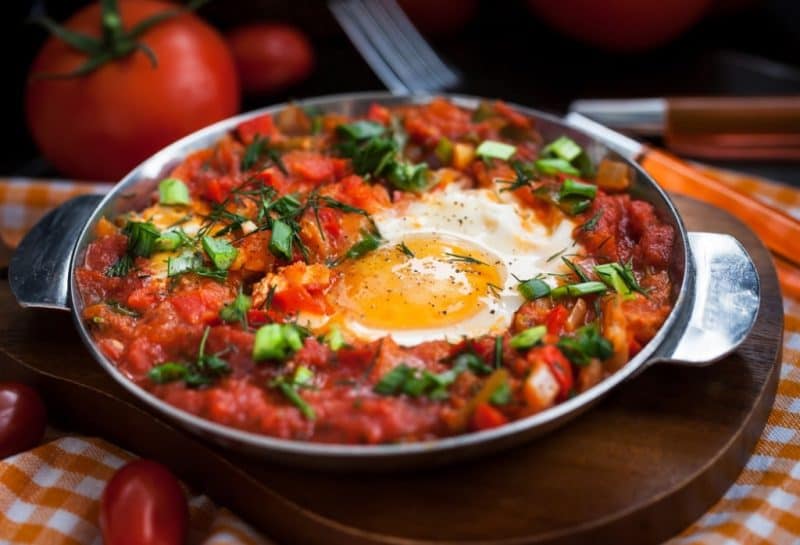
Israelis will shiver at the idea of shakshouka, which they consider one of their national dishes, being mentioned in a post about Egyptian food. Yet, this dish of poached eggs cooked in tomatoes with spices, garlic, paprika, and bell peppers is very common in Egypt.
Roz Bel
Another sweet dish of Egyptian cuisine that can actually be found in many other countries, with a slightly modified recipe. It consists of rice cooked in milk, cream, and sugar and served hot topped with pistachios. It’s simple yet delicious.
Baklava
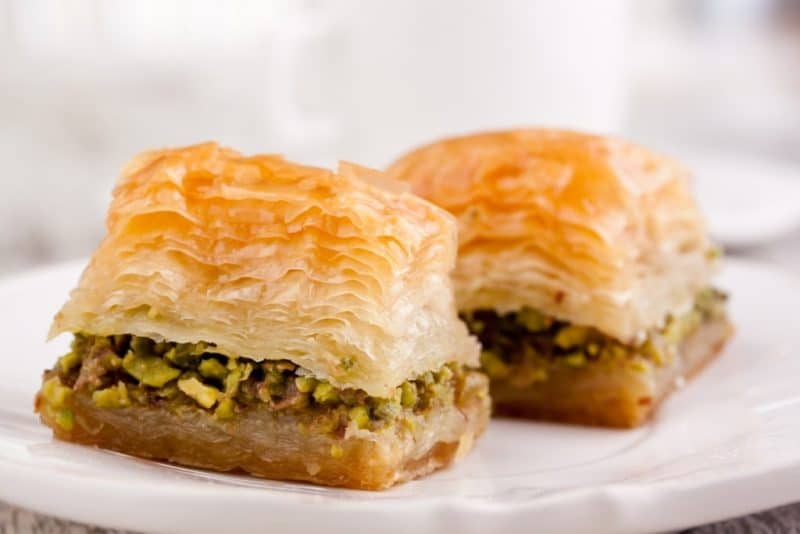
One of the most common sweets found in Egypt and in the Middle East, baklava is made with filo (phyllo) pastry filled with all sorts of nuts (can be pistachio nuts, walnuts, almonds…) and then drenched in a very sweet, sticky syrup.
Basbousa
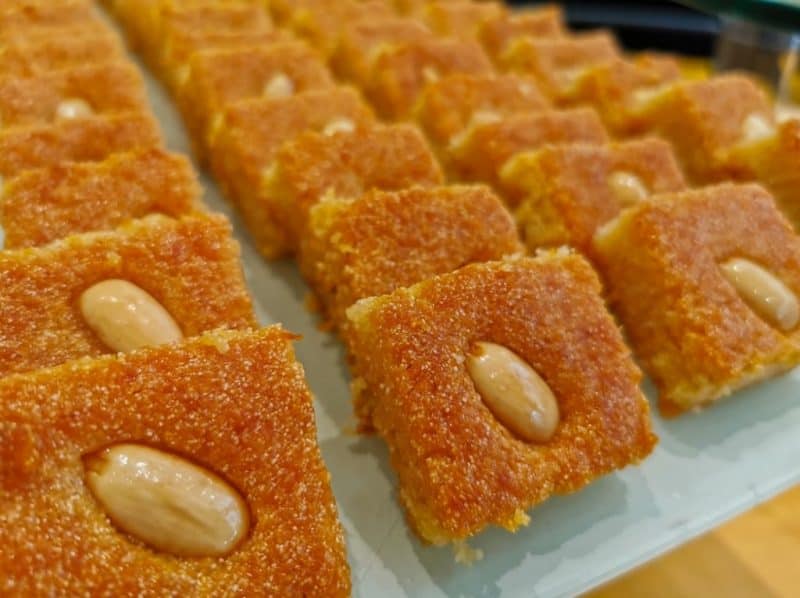
Another popular sweet found across the former Ottoman countries is made of semolina pastry which is first soaked in honey and then topped with chopped hazelnuts or almonds. You may see it served with fresh cream.
Konafa (or Kanafeh)
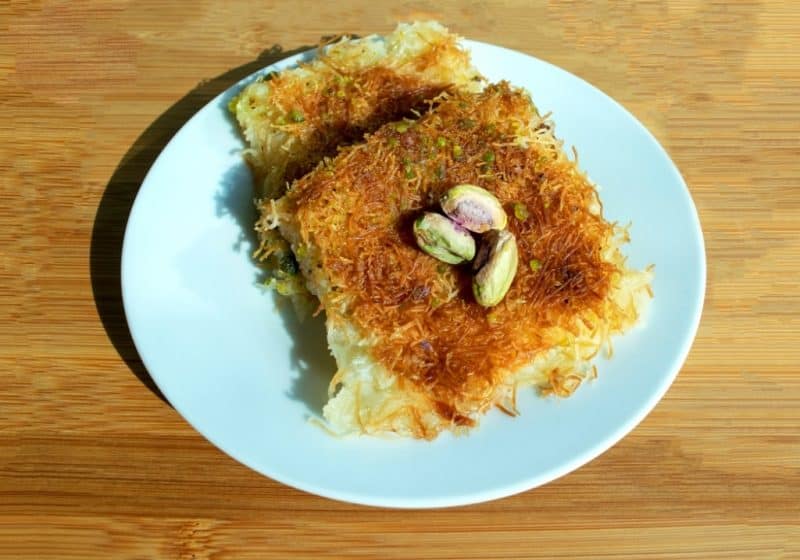
This lovely Egyptian dessert is made with baked noodles made of phyllo pastry, grilled together with a mild, creamy cheese and loads of butter, and topped with a very sweet syrup. Much like baklava, it’s a common sweet across all countries that were under Ottoman rule. Have it with piping hot mint tea for perfection.
Umm Ali
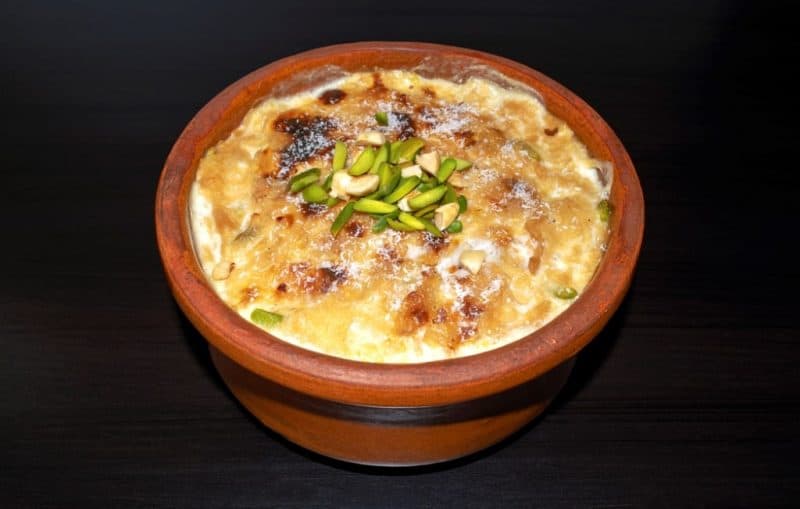
Another traditional Egyptian food worth having for its interesting history – according to legend, umm ali, whose original name is Om Ali and means Ali’s mother, was created in the 13th century by the wife of Sultan Ezz El Din Aybak in order to celebrate a victory. It’s similar to bread pudding – a number of layers of bread or puff pastry soaked in milk, mixed with sugar, raisins, nuts, and coconut flakes, and then baked. It’s served piping hot.
Baked sweet potato
Quite literally sweet potatoes are cut in half and baked in the oven, then sprinkled with sugar. It’s typically sold in the streets and more modern, glamorous versions see it served with ice cream and toppings of any kind.
Sahlab
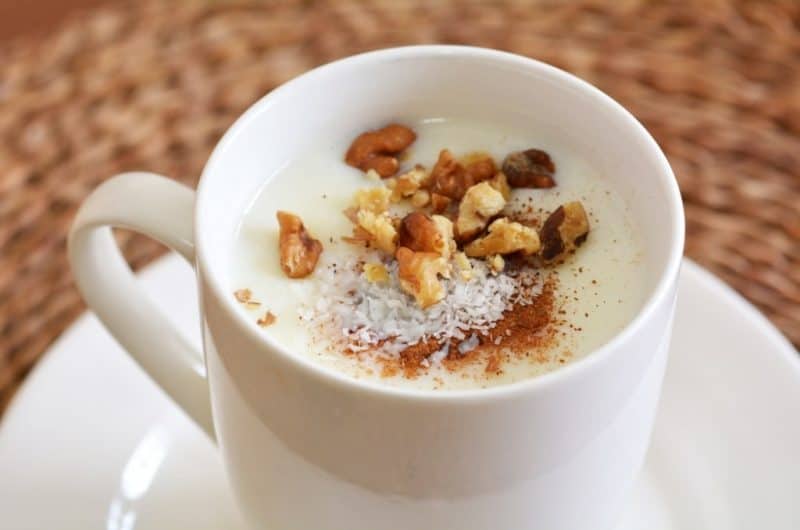
In between a drink and a dessert, this Egyptian food is prepared with milk and orchid root power, topped with cinnamon, shredded coconut, pistachio. It’s a great thing to have on a cold winter day. If you are lucky, you may even find the vegan version of this drink made with coconut or soya milk.
Mahalabiya (Mahalabia or Muhallebi)
Another lovely Egyptian dessert, this pudding is made of rosewater, orange blossom, and cardamom flavored rice topped with toasted nuts and cinnamon.
Egytpian Drinks To Accompany The Best Egyptian Food
Make sure to visit an ahwa, a traditional Egyptian coffee house to enjoy a cup of some of the best coffee in the world, or a shai (tea). Ahwa’s are a great places to interact with the locals, so don’t be surprised if the person sitting at the next table starts a conversation with you.
Egyptians also love juices and there are many juice shops around Cairo. A popular juice is assab, made from sugar cane.
Conclusions On Egyptian Food
Enjoying the local cuisine of the countries you travel to should always be a part of your to-do list. Don’t just visit the top attractions and go back home without having a single bite of your destination’s food like some travelers do. In my opinion, sampling the food will make your trip more memorable. If you don’t know where to start, you may even take a guided food tour to check out what’s on offer.
Recommended: Cairo food tour, click here for more information and to book the tour.
So, when you travel to Egypt be sure to try as much Egyptian food as you can. You can begin by tasting the dishes mentioned on my list. Once you leave Egypt you may be hard-pressed to find restaurants in your country or other parts of the world offering authentic Egyptian cuisine. So, it will be nice to say you have had Egyptian food once in your life if you never travel to the country again.

